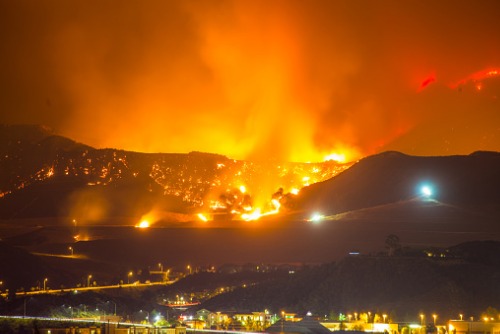

Predictions that wildfires are only going to get more destructive are becoming a reality. The California Department of Forestry and Fire Protection (CAL FIRE) has reported that the still-active Mendocino Complex fire is now the largest in the state’s history after burning through more than 354,000 acres already. By comparison, the second fire on CAL FIRE’s list of top 20 largest wildfires is the Thomas fire, which burned through just over 281,000 acres in total last October.
“We’re really seeing that this year, CAL FIRE has stated that more actual acreage has burned than last year,” said Guy Kopperud, industry solutions principal at CoreLogic. “The part that’s keeping us on pins and needles is the fact that it’s happening so early.”
Some neighborhoods in California have yet to bounce back after 2017’s destructive blazes. Santa Rosa’s Fountaingrove community saw all but some 50 of its 1,685 homes wiped out, while the nearby neighborhood of Coffey Park was likewise leveled with more than 1,200 of the 1,651 homes destroyed, according to Kopperud, and the rebuilding of homes has been slow.
“Everybody is being impacted, whether you’re in Fountaingrove or in Coffey Park. The one thing that has made it easier for Coffey Park victims is that those homes are being built much quicker and easier because they are not as complex,” Kopperud told Insurance Business, adding that the average size of a home in Fountaingrove is between 3,000 or 4,000 square feet while Coffey’s homes are typically around 1,200 square feet.
Despite this, only about 400 homes are currently under construction in Coffey Park and surrounding neighborhoods, while Fountaingrove’s rebuilding has fallen even further behind.
“There are about 40 to 50 homes that are under construction, so why is it going so much slower in Fountaingrove?” said Kopperud. “They’re much more expensive – they’re $1 million to $2 million homes – so the building department is going to be much stricter as far as accepting the customizations that tend to go with those styles of homes.”
There also aren’t a lot of contractors available in the area because of California’s strict licensing requirements and the state’s process for going through building permits. Currently, 40% of homes are being rebuilt by 10 different contractors. Meanwhile, time is running out for people in the Santa Rosa area who are waiting to move back home.
“The frightening part is that if we don’t get a large percentage of those homes approved, find contractors, and break ground in the next three, four, or five months, what that means is that they’re going to run out of time for the homeowners who are paying rent, which is covered through their policy,” said Kopperud.
For carriers, the Santa Rosa fires have illustrated how important it is to make sure they have the accurate insurance to value (ITV) for properties, especially those in at-risk areas. Homeowners share responsibility to communicate to carriers all the attributes about a home that determine its value, but the insurance industry also needs to make efforts to get ITV right.
“As a peril, fire is really unique. When it happens, it oftentimes ends up in a total loss and for what happened in Santa Rosa, because of how broad and wide it was, and how many homes were affected, it’s really critical to get the ITV for those properties to be accurate,” said Kopperud, adding that even for partial damage to homes, carriers still need to collect premiums based on the true value of say, a property’s roof. “We try to impress upon our insurance carriers, our clients and our industry in general how important insuring to value is.”
